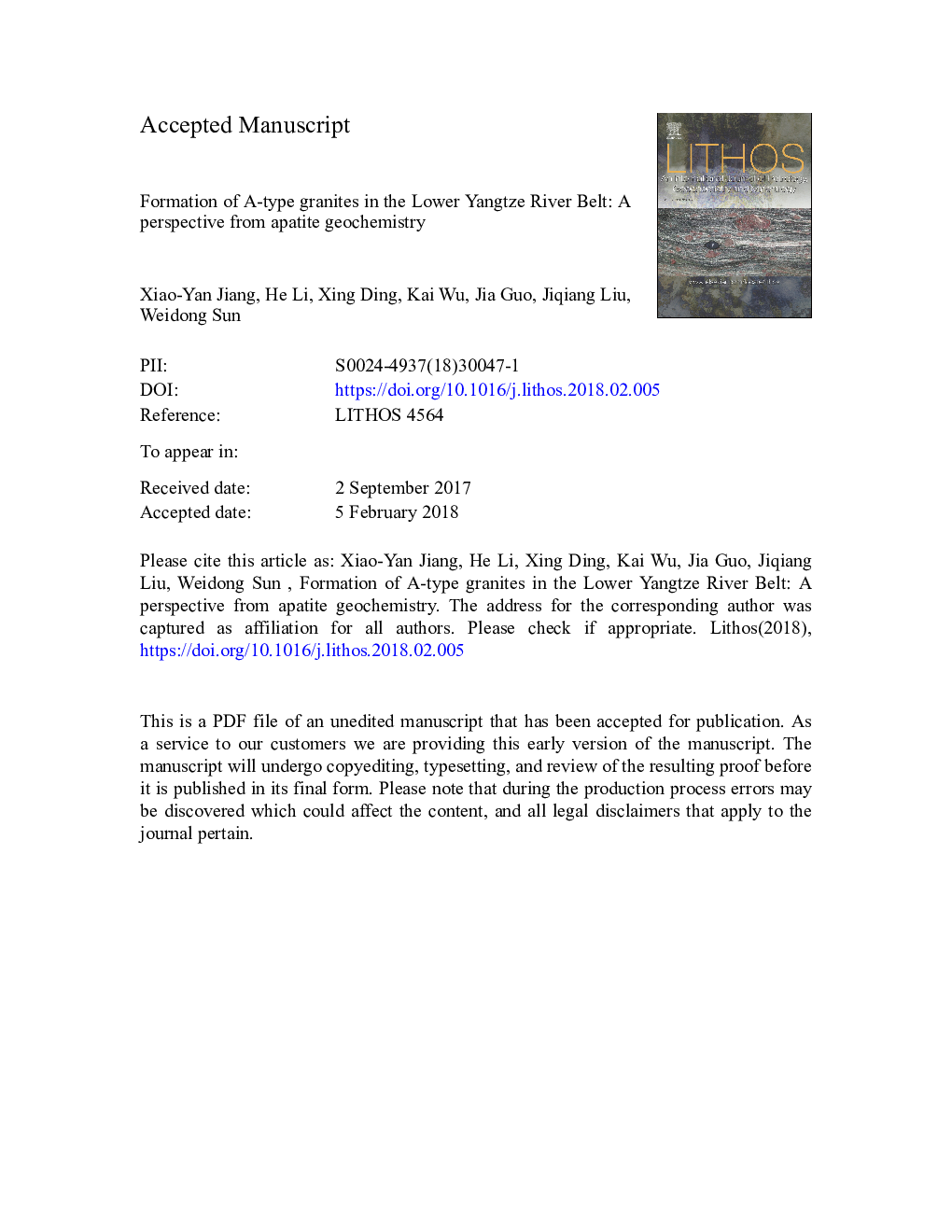| Article ID | Journal | Published Year | Pages | File Type |
|---|---|---|---|---|
| 8911669 | Lithos | 2018 | 46 Pages |
Abstract
Apatite is ubiquitous in A-type granites, and can be used to elucidate the volatile contents of the silicate melt, which reflect its source characteristics. A-type granites have been recognized as a distinct group of granites. A1- and A2-type subgroups are produced under different extensional settings. However, the details of the mechanisms behind the distinctive geochemical characteristics of A1- and A2-type granites remain obscure. Belts of Cretaceous A1- and A2-type granites occur along the Lower Yangtze River Belt in eastern China. Here we investigated the major and trace element compositions of apatites from contemporary A1- and A2-type granites at different localities along the Lower Yangtze River Belt, in order to decipher their discrepant source processes. Apatites from A1- and A2-type granites show similar major and trace elements, but differ in their F and Cl concentrations. Apatites from A1-type granites in the eastern part of the Lower Yangtze River Belt have much lower F and higher Cl concentrations compared to A2-type granites in the western part. Moreover, from the east to the west, the F concentrations of apatites from A1-type granites increase, while the Cl concentrations decline. In a subducted plate, F is retained by amphibole, chlorite, serpentine and mica minerals through the amphibolite stage, and finally by phengite and lawsonite during the eclogite stage, whereas, Cl is controlled by amphibole, chlorite and serpentine. The high and varied Cl concentrations in A1 subgroup apatites, therefore, may be attributed to the breakdown of amphibole, chlorite and/or serpentine decomposition during partial melting of subducted oceanic crust releasing a large amount of Cl at shallower depth. In contrast, F is transported to deeper depths in the subducted oceanic crust, and released through breakdown of phengite and lawsonite, making an important contribution to the formation of A2-type granites. Apatites from A1- and A2-type granite samples show regular changes in LREE/HREE, LREE/MREE and MREE/HREE ratios with increasing distance from the location of the subduction zone, probably as the result of nonsynchronous dehydration of the serpentine and phengite at different stages during subduction. We propose that A1- and A2-type granites on the Lower Yangtze River Belt were derived from sources metasomatised by fluids originating from the breakdown of amphibole, chlorite and/or serpentine with higher Cl, lower F, and from phengite and/or lawsonite with relatively higher F but lower Cl, respectively.
Related Topics
Physical Sciences and Engineering
Earth and Planetary Sciences
Geochemistry and Petrology
Authors
Xiao-Yan Jiang, He Li, Xing Ding, Kai Wu, Jia Guo, Ji-Qiang Liu, Wei-Dong Sun,
